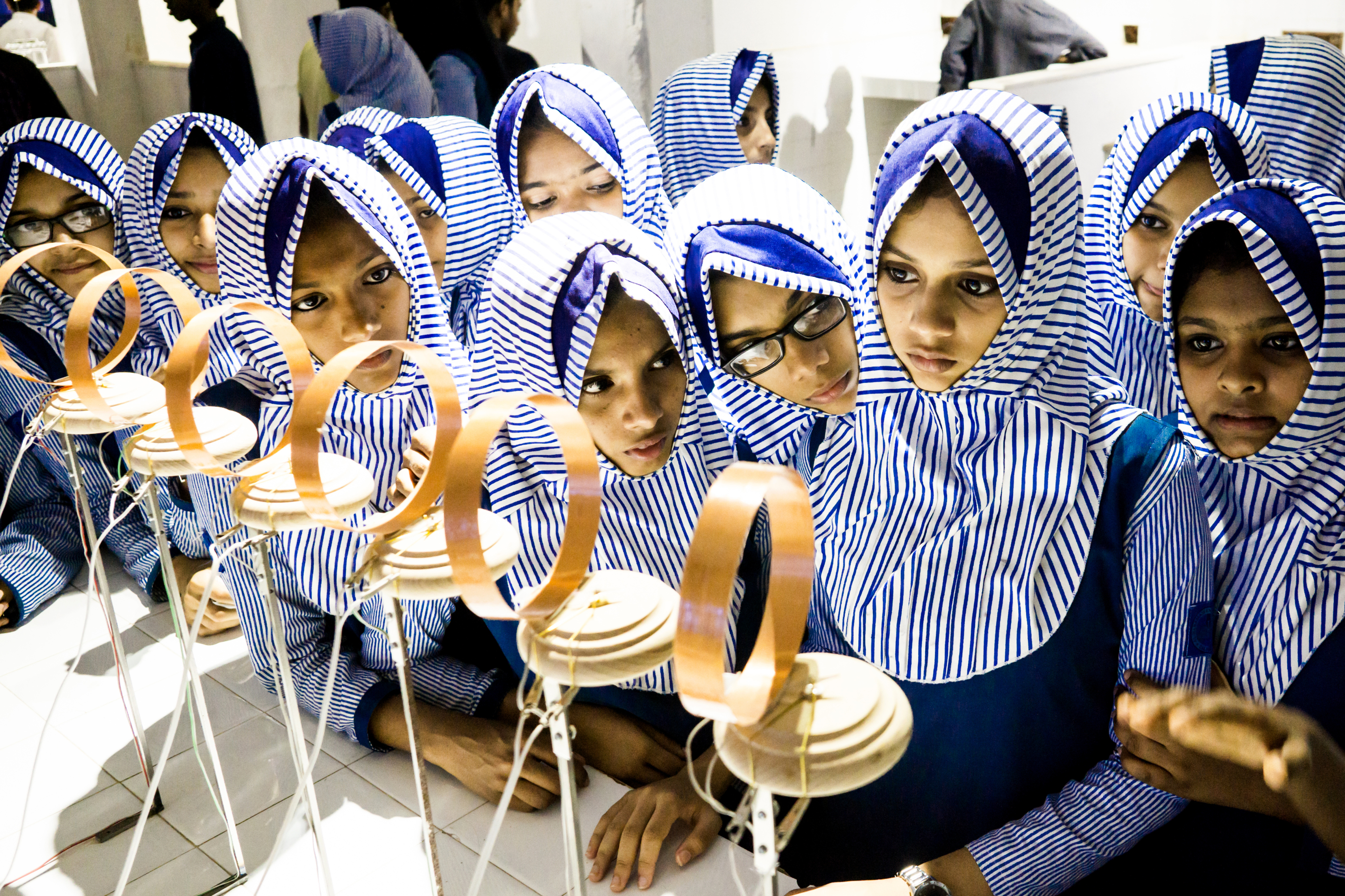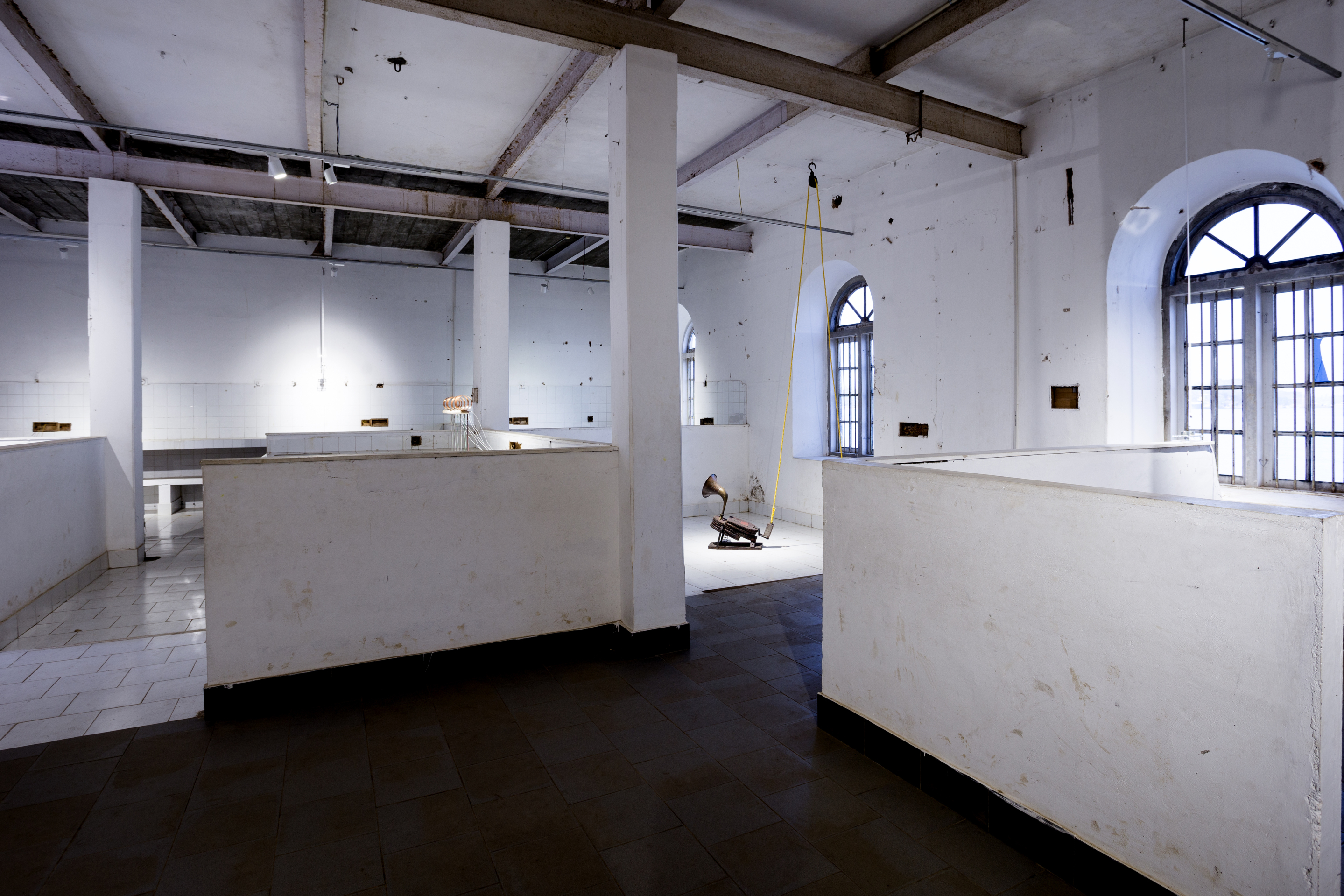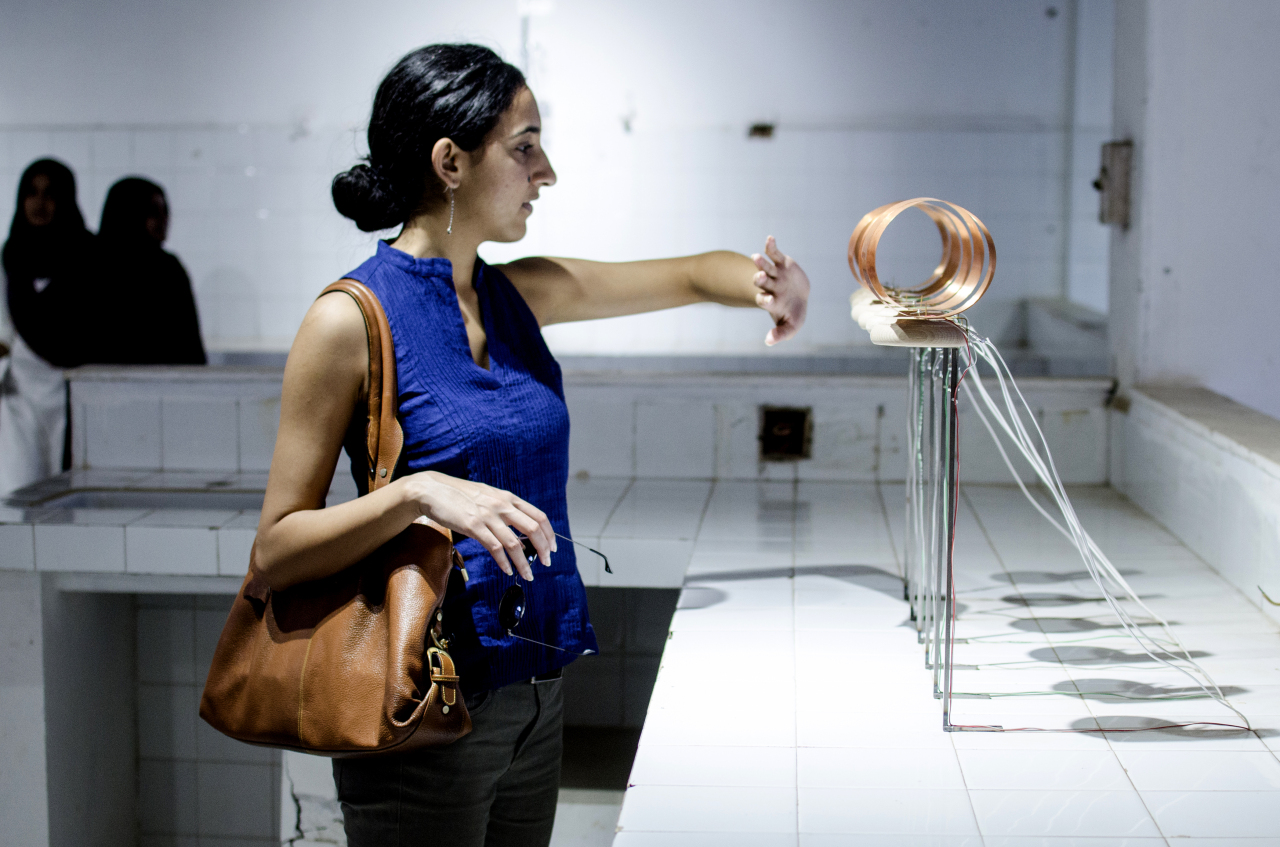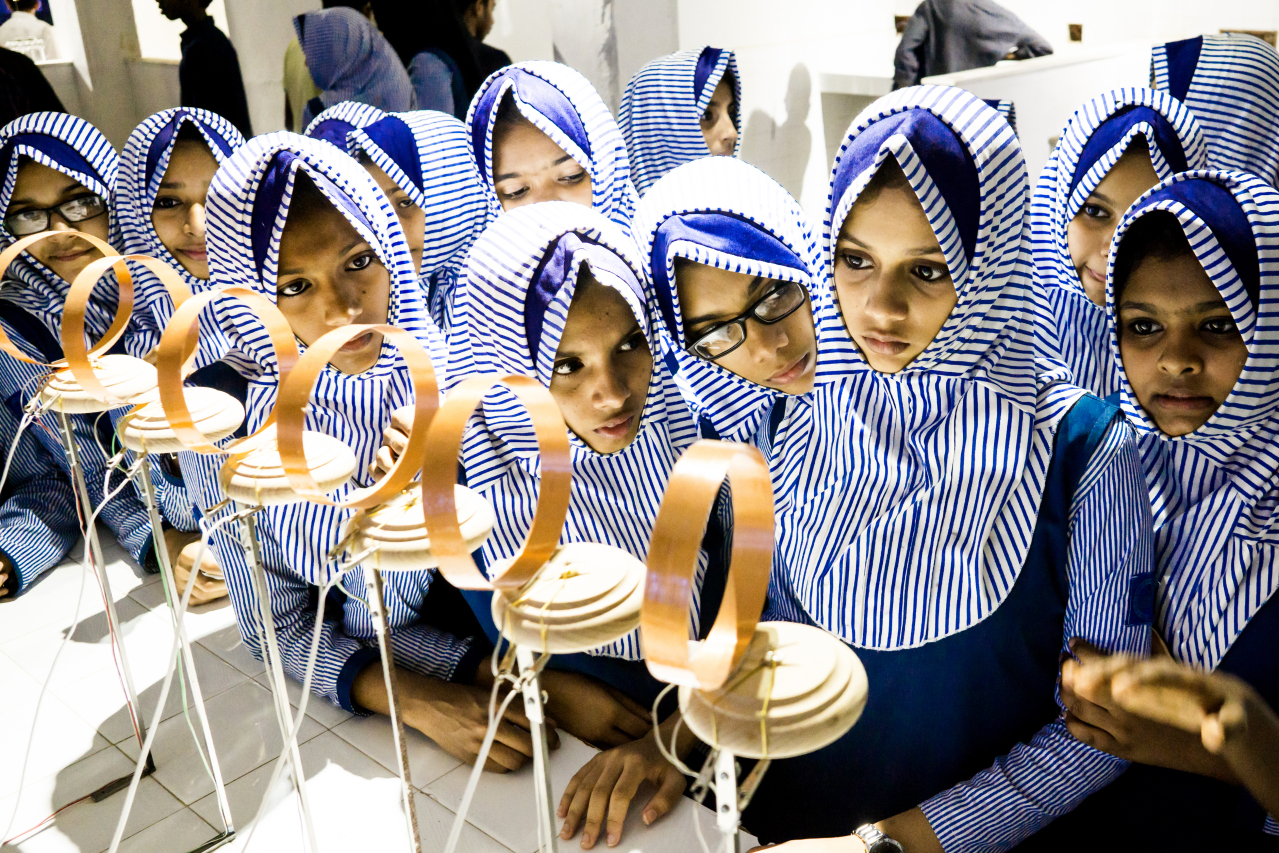Kochi-Muziris Biennale 2016: Forming in the Pupil of an Eye
Aspinwall, Kochi, India
Dec. 12, 2016–Mar. 29, 2017
Curation: Sudarshan Shetty
URL: http://kochimuzirisbiennale.org
Exhibited Works: Calls, Oni-bi (fen fire)

Kochi-Muziris Biennale
Concept Note (August, 2016)
It is apparent that there have been some typical patterns seen among folk beliefs and customs around the world. There were not only people and goods but also beliefs and customs would spread along trade or war routes in history. Folklore and customs exchanged through “circuits” by both land and sea, would get shaped and modified in order to adopt to specific environment, are so to speak, integrated wisdoms handed down through generations.
* * *
Let’s take a look at fireballs for example- “Shiranui,” which is referred in Nihon-shoki (the oldest chronicles of Japan completed in the 8th century) , is a kind of atmospheric ghost lights still seen in the coast of Kyushu area in Japan. The optical phenomenon of course, appears in literature of China in the 3rd century already, which Japan adopted its ethics and characters from.
People would associate such mysterious optical phenomena such as fire balls with old saying of “fen fire”— burning souls of the dead.
Today, all ghost lights that used to be associated with souls of the dead can be easily explained as natural phenomena such as optical effect or electric discharge.
It is all that simple — or, is it?
Two sailors on the deck of Polish merchant vessel named “S.S.Pułaski,” which was sailing across the Indian Ocean due to transportation for the British Army in 1941 during the World War II, testified that they had seen a strange globe glowing with greenish light, about half the size of the full moon as it appeared to them above the water, for more than an hour.
As there is certainly a presentiment of death in the story, we can assume that people tend to see what they anticipate, in something they are actually seeing.
* * *
One of the works exhibited at the biennale this time is entitled Oni-bi (fen fire). When threads blowing in the wind touch the electricity running on the surface of the window screen, little sparks fly to energize the circuit of the glockenspiel. Since the curtain randomly touches the keyboard to make sound, this aleatoric music that the glockenspiel plays sounds a bit like gamelan. The glockenspiel part uses the circuit diagram of a hand-made automatic organ that an American organist Victor Searle, who came to Japan right after the World War II, accidentally left Mohri.
In the following summer after Searle passed away, Mohri worked on the instrument-like piece Oni-bi (fen fire), which gets played by little fireballs. The whole installation made afterwards with bunch of instruments such as bells and trumpets placed around Oni-bi (fen fire) was entitled Calls.
In Japan, the spirits of the dead are believed to return home for a brief while to “call” to their descendants, during mid-summer and New Year’s season.
Mohri might have worked on this work, in order to make invisible thing visible.
* * *
White paper also, has been used as a tool to visualize energy unseen, such as gods and spirits since ancient times in Japan.
A roll of white paper is a trigger for the third piece at the biennale.
The paper, which scoops up all kinds of dirty traces and steins in the exhibition space, plays a role like a musical score. Traces and steins left on the paper show all the unseen energy such as gravity, humidity, brightness and direction of wind, which are usually ignored in an exhibition space. The paper senses all the unseen factors to gradually affect the movement of the piece, as all the pieces placed in work amplify the unseen energy if it were trying to excavate an ancient habitation site or dowse for oil. Eventually, subtle energy spread throughout the exhibition space in a chain reaction to generate a certain type of ecosystem.
The whole environmental factors around Mohri’s work always turn into a part of the entire work in the end.
The title I/O, meaning Indian Ocean which Mohri first saw from the coast of Perth in Western Australia, and also meaning “Input/Output”, was given to the piece in 2011.
* * *
At Kochi-Muziris Biennale, Mohri will work on upgrading all the three works, utilizing the unique exhibition space which used to be a laboratory.
Mohri is anticipating to work on the pieces in organic, interactive environment this time, hoping that they eventually get transformed just like folk beliefs and customs mentioned previously, to be shaped and modified in order to adopt to this once-in-a-lifetime environment at the biennale. In that sense, the three installation made in this town facing the Arabian Sea which is connected to the Indian Sea, eventually form another I/O, which stands for “Integrated/Ocean” circuits.
August, 2016


